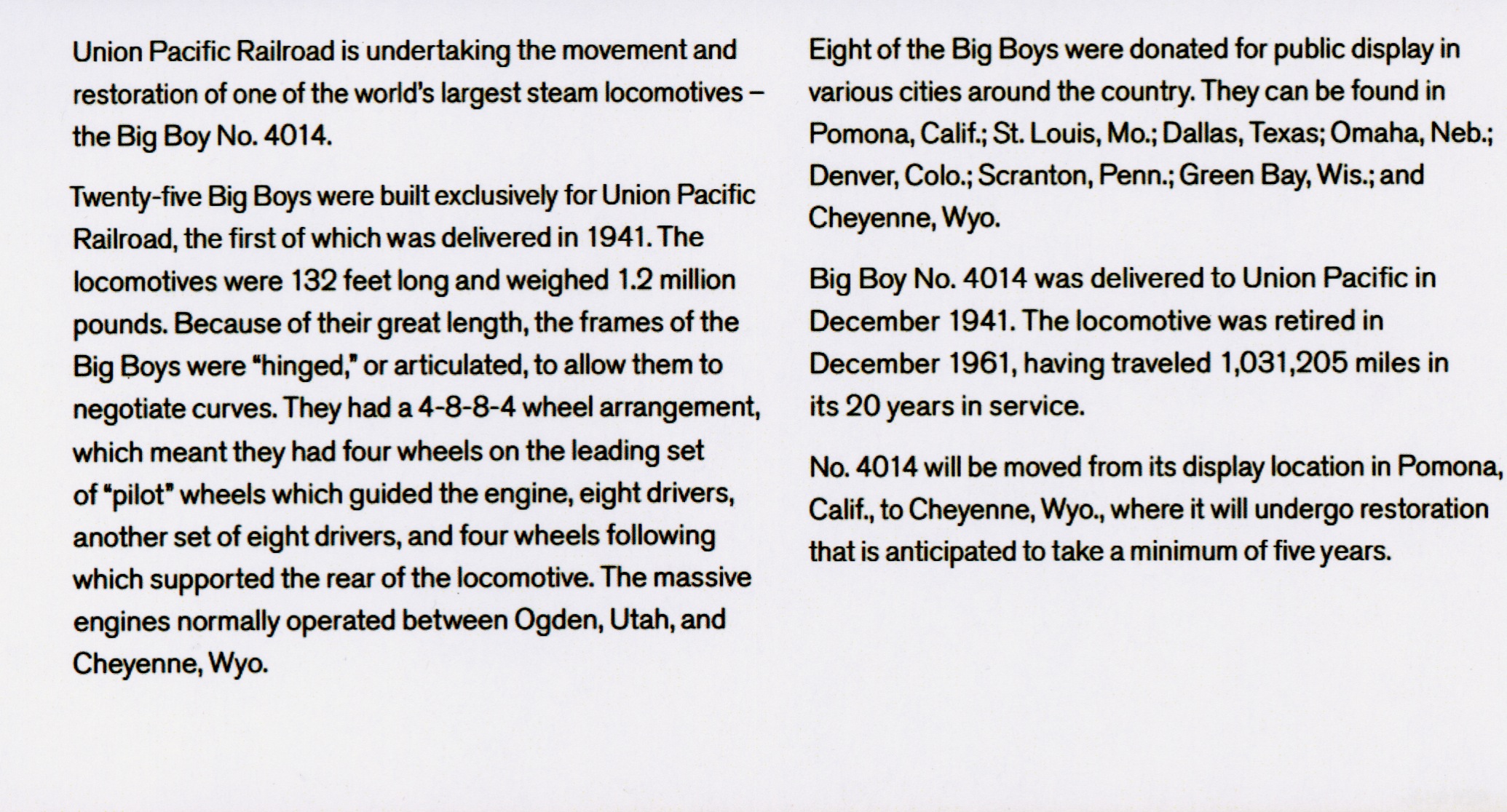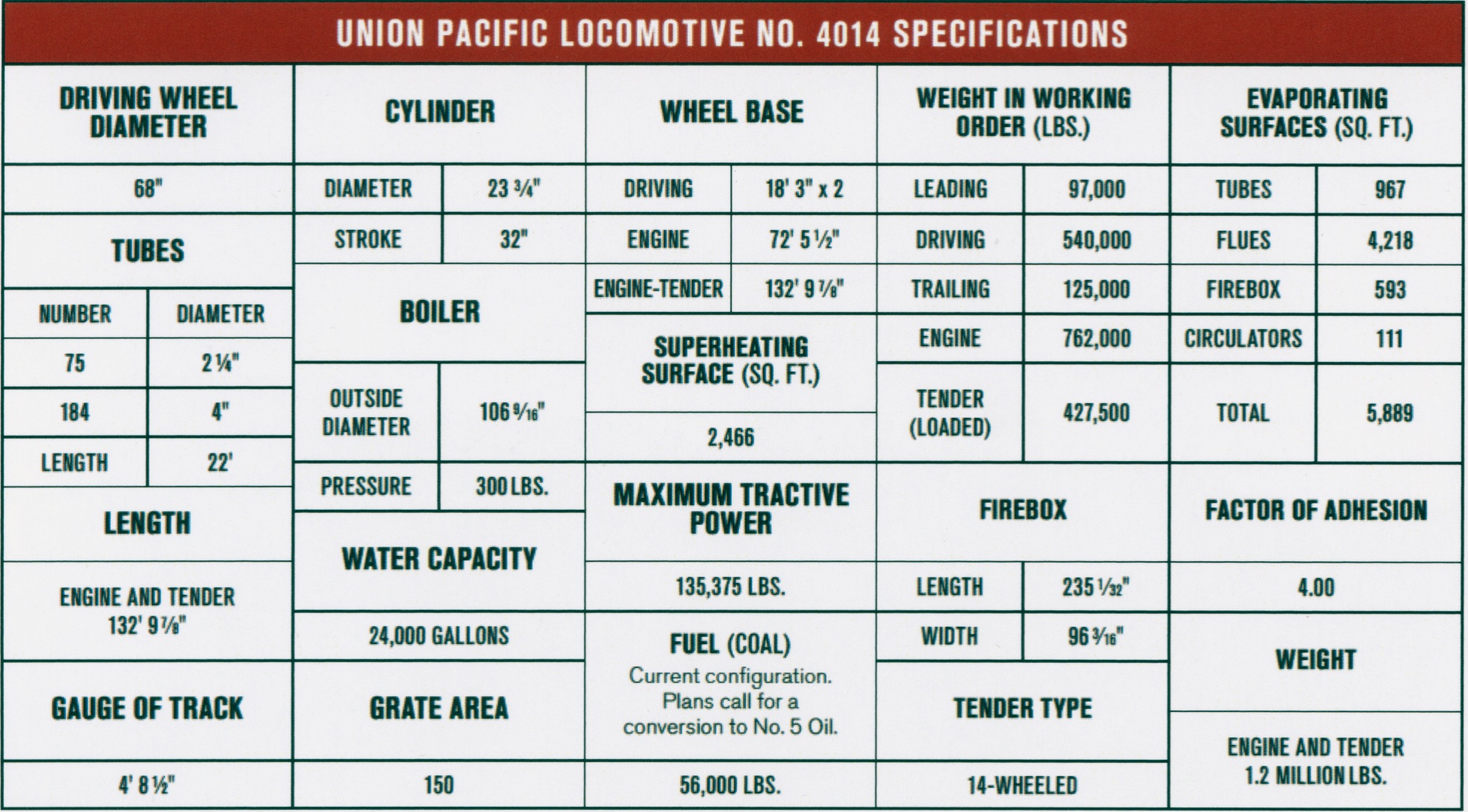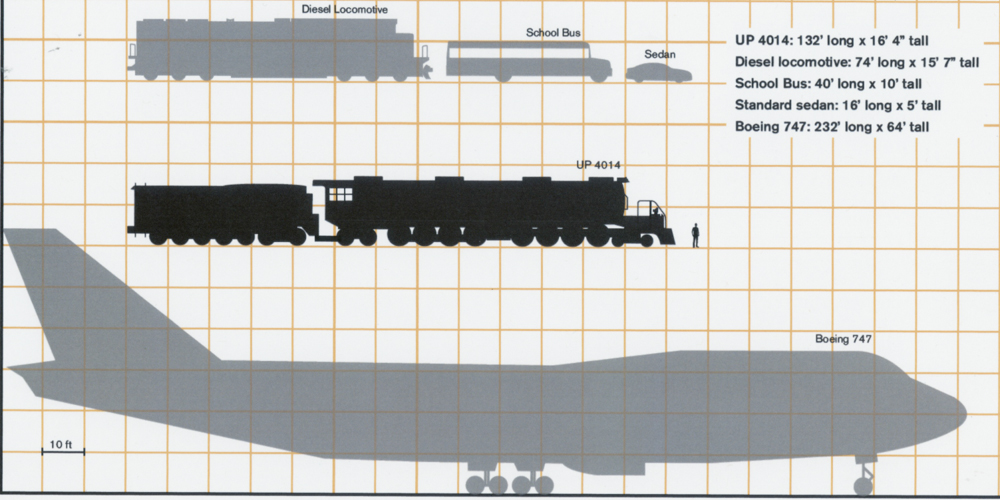
Event Report
20140202
About a week ago I saw
a news item that a very, very large steam locomotive was being
moved from a museum in Pomona, CA to Cheyenne, WY for
restoration. Kathleen is quite a train buff, so I did some
research to see if the loco was visible anywhere within a
reasonable distance. To my surprise, we discovered that it
was available for viewing at the Union Pacific West Colton yard
in Colton, CA. So we loaded up the M5 and drove the 120
miles to get a first hand look at a 1,200,000 pound chunk of
steel.
The photos below are what we saw.

The
drive to Colton was on Super Bowl Sunday so it was easy
going. We arrived there around noon and found a very good
Mexican restaurant for lunch. When we were done, we headed
south over I-10 and got a view of Union Pacific's West Colton
yard from the overpass. We could only see about 10% of the
yard, but it is huge and sits at a major intersection of rail
traffic. The yard is staging trains 24/7 and indeed we
could see traffic going through the "hump yard" as the trains
were being assembled. Above is part of the fueling
complex. There are a lot of "motors" sitting over there
and at about a million dollars a pop that is a lot of capital
equipment sitting idle.

Closer
to the freeway we could see the yard master's tower that allows
them to see operations in the yard.

Looking
for the display area for the steam engine, we mistakenly turned
into the main yard. While we were turning around, we could
see some of the rolling stock awaiting a crew.

Lots of
motors just sitting idle.





We came
up to Big Boy from the rear as that is the way they channeled
traffic. The U.P. put up a ton of temporary fence to allow
folks access to the area. The yard is very busy and motors
passed us many times. The photo above shows the rear end
of the tender car. Note the new knuckle on the rear of the
car. Since the car had been sitting idle since 1961, a bit
more than 50 years, the knuckles were replaced for safety
reasons to allow the loco-tender combination to be towed to the
Colton yard. The tender held both coal and water, but
depending on the work load, the water almost always ran out
first. Early railroads had water towers every 50 miles or
so to refill the tender's tanks.

The
tender had 7 of these axles supporting it's 427,000 pound mass.

While
this photo does not really convey the length of this beast, one
later in the set will.

Standard
air brakes.

The
trucks supporting the rear of the loco were massive chunks of
cast iron.

I
glanced between the loco and tender and spotted the coal feed
auger. The auger ran underneath the coal bin and fed the
coal forward to the firebox of the loco. Like everything
else, the auger was steam powered.

West Colton is a busy
yard and long chains of motors being repositioned passed by
frequently.

The
junction between the loco and tender had huge twin links for
pulling and a hemi-spherical push-pad for braking. Note
the lubrication hose that greases the push-pad.

Something
old and something new. The side of the loco had a
TransCore radio transponder to allow the U.P.'s track-side
tracing system to keep track of the loco's position. This
was interesting as Kathleen worked with that group. Note
the really ugly weld; that is one nasty bead.

Huge 68"
drive wheels had pressed-on rolling surfaces made out of carbon
steel.

The
large rivets are about the size of a chicken egg.

Kathleen
is about 5'8" so you can get a sense of scale.

The
driver arms had interesting wire-ties acting as lock nuts.

This is
a rocker-arm actuated oil pump. Note the new lubrication
hoses that are attached.

The
driver arm was not connected to the steam piston. The
diameter of the main piston is 23.75" and at 300 psi operating
pressure one piston pushes with a force of 132,904 pounds per
piston. This loco has 4 pistons running at the same time.

The piston rod goes
through the hole in the casting.

This loco has logged
about a million miles on the rails and during that time has
had many service actions. Note the big hammer dings on
the face of the hardened metal connecting rod.

Another oil pump,
this one was chain driven..

Both the valve piston
and the drive pistons were removed. Note the size of the
inlet duct that passes steam from the boiler to the
valve-piston assembly

This Big Boy was
completed in 1941 during WWII.

My camera has a 24mm
focal length at widest setting and it was not possible to
capture the entire loco in one frame. Note the new
knuckle on the front connection point.

There were plenty of
folks in awe of the size of the loco.


Note the size of the steam delivery pipes.

This piston is used
to reverse the direction of the loco.

The wheels are
connected to the axles with huge hardened keys.



A parting shot of the
busy West Colton yard. Yet another string of huge motors
passed us being moved as part of train assembly.
Big Boy is
a sight to behold and is larger than today's diesel-electric
locomotive by quite a bit. But, as you can tell from the
photos, steam engines are very complicated and the large number
of moving parts made it an easy decision to replace them with
more reliable equipment. That said, I look forward to
seeing Big Boy in operation sometime in the future.
The visit
to the West Colton yard made me fully appreciate the amount of
effort and capital equipment that is required to make a railroad
operate.
Copyright Bill Caid 2014. All rights reserved.